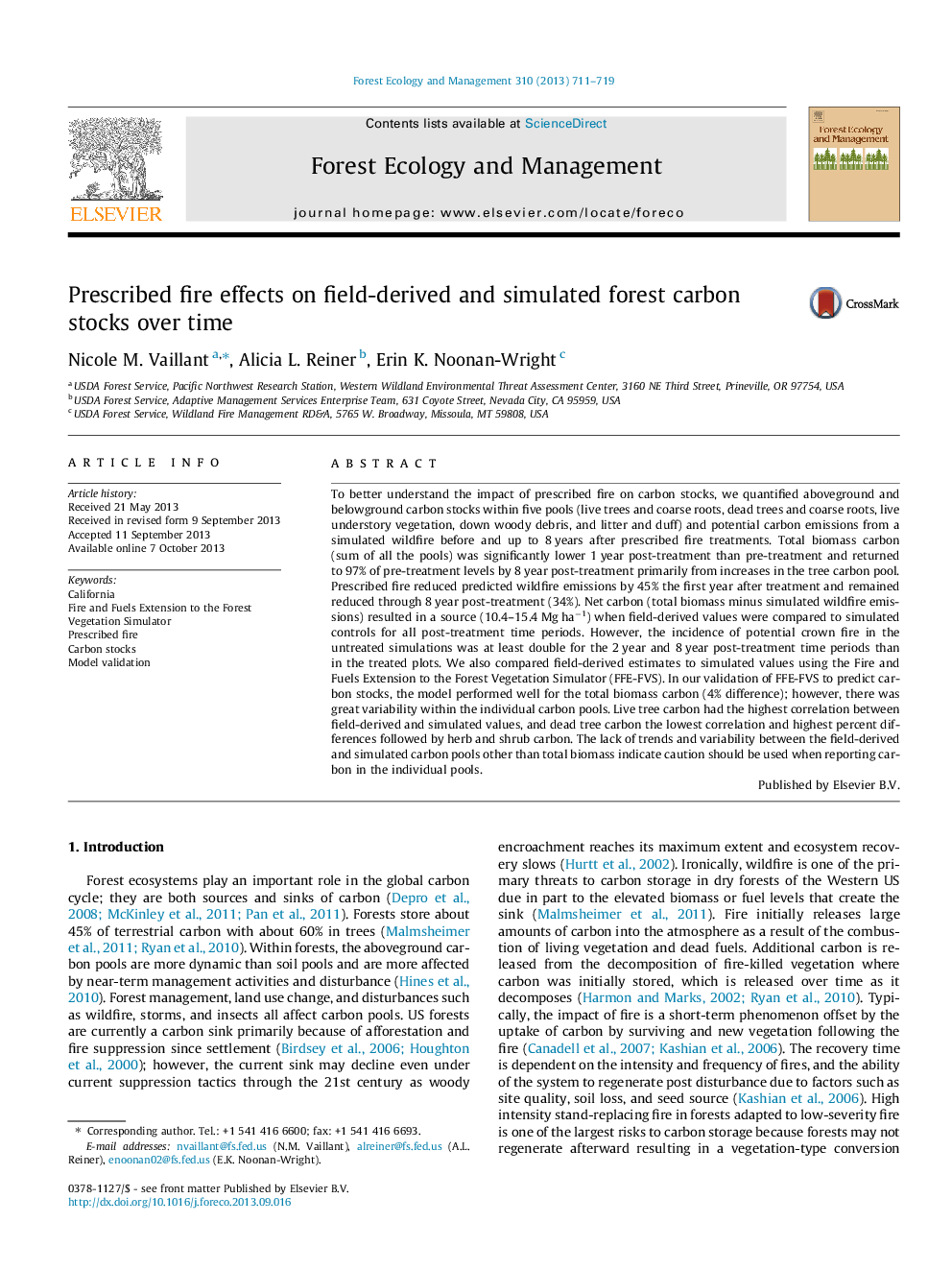| کد مقاله | کد نشریه | سال انتشار | مقاله انگلیسی | نسخه تمام متن |
|---|---|---|---|---|
| 6543841 | 159212 | 2013 | 9 صفحه PDF | دانلود رایگان |
عنوان انگلیسی مقاله ISI
Prescribed fire effects on field-derived and simulated forest carbon stocks over time
ترجمه فارسی عنوان
اثرات آتش سوزی بر روی ذخایر کربن جنگل مشتق شده و شبیه شده در طول زمان
دانلود مقاله + سفارش ترجمه
دانلود مقاله ISI انگلیسی
رایگان برای ایرانیان
کلمات کلیدی
کالیفرنیا، آتش سوزی و سوخت اضافی برای شبیه ساز جنگل گیاهی، آتش اعلام شده، ذخایر کربن، اعتبار مدل،
موضوعات مرتبط
علوم زیستی و بیوفناوری
علوم کشاورزی و بیولوژیک
بوم شناسی، تکامل، رفتار و سامانه شناسی
چکیده انگلیسی
To better understand the impact of prescribed fire on carbon stocks, we quantified aboveground and belowground carbon stocks within five pools (live trees and coarse roots, dead trees and coarse roots, live understory vegetation, down woody debris, and litter and duff) and potential carbon emissions from a simulated wildfire before and up to 8 years after prescribed fire treatments. Total biomass carbon (sum of all the pools) was significantly lower 1 year post-treatment than pre-treatment and returned to 97% of pre-treatment levels by 8 year post-treatment primarily from increases in the tree carbon pool. Prescribed fire reduced predicted wildfire emissions by 45% the first year after treatment and remained reduced through 8 year post-treatment (34%). Net carbon (total biomass minus simulated wildfire emissions) resulted in a source (10.4-15.4 Mg haâ1) when field-derived values were compared to simulated controls for all post-treatment time periods. However, the incidence of potential crown fire in the untreated simulations was at least double for the 2 year and 8 year post-treatment time periods than in the treated plots. We also compared field-derived estimates to simulated values using the Fire and Fuels Extension to the Forest Vegetation Simulator (FFE-FVS). In our validation of FFE-FVS to predict carbon stocks, the model performed well for the total biomass carbon (4% difference); however, there was great variability within the individual carbon pools. Live tree carbon had the highest correlation between field-derived and simulated values, and dead tree carbon the lowest correlation and highest percent differences followed by herb and shrub carbon. The lack of trends and variability between the field-derived and simulated carbon pools other than total biomass indicate caution should be used when reporting carbon in the individual pools.
ناشر
Database: Elsevier - ScienceDirect (ساینس دایرکت)
Journal: Forest Ecology and Management - Volume 310, 15 December 2013, Pages 711-719
Journal: Forest Ecology and Management - Volume 310, 15 December 2013, Pages 711-719
نویسندگان
Nicole M. Vaillant, Alicia L. Reiner, Erin K. Noonan-Wright,
